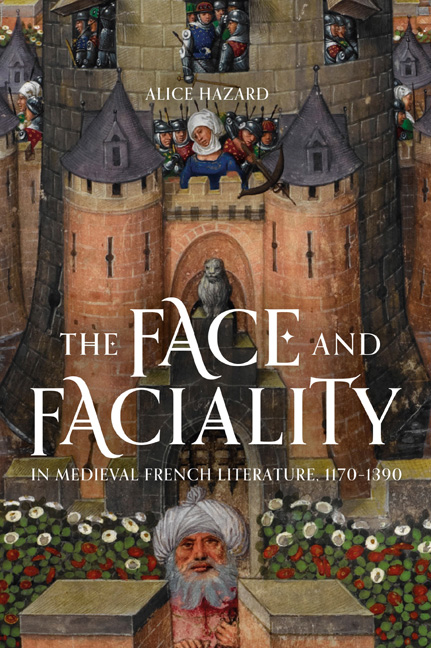1 - Levinasian Faces in Arthurian Verse
Published online by Cambridge University Press: 17 April 2021
Summary
This chapter looks at the face as the marker of an assumed interiority in encounters between knights in twelfth-and thirteenth-century Arthurian romance, and uses the work of Emmanuel Levinas to offer an alternative, non-representational reading. Beginning with the judicial duel between Yvain and Gauvain towards the end of Chrétien de Troyes's Le Chevalier au lion, and then looking at scenes from two thirteenth-century texts, the chapter charts the problem of representation as dealt with in French Arthurian verse. It is through the figure of the masked knight that the problem is traced; caught somewhere in between his individual identity and social and institutional status, the literary knight finds himself at the convergence of powerful forces.
The goal of this chapter is to analyse these texts while couching the figure of the knight in terms of representation: on the one hand, he is a figure that can be read, and whose surface appearance relates to an inferred inner essence. On the other hand, there are moments in the texts when the knight's appearance frustrates this kind of representational reading. This is not, however, a chapter about disguise and misrecognition as such. My concern is less with when appearance is misread and more with when it is unreadable. Often the two coincide in the narrative, and it can be difficult to distinguish them. But the aim of my analysis is to single out the unreadable face, specifically, to throw it into relief and to put it into dialogue with faces that are read – whether successfully or not. Equally, I do not go so far as to claim that all faces are fundamentally unreadable. Rather, the primary observation of this chapter is that the face is a motif that is both representational – and therefore readable – and nonrepresentational. To describe this I also refer in the chapter to faces that are ‘symbolic’ and ‘non-symbolic’; in all cases I am describing the difference between faces that refer to and/or imply an interiority, and those that don’t. A crucial part of my argument is that these multiple faces are not oppositional; to be ‘two-faced’ in this sense is not to show one thing and mean another but to operate both within and without a semiotic.
- Type
- Chapter
- Information
- Publisher: Boydell & BrewerPrint publication year: 2021



